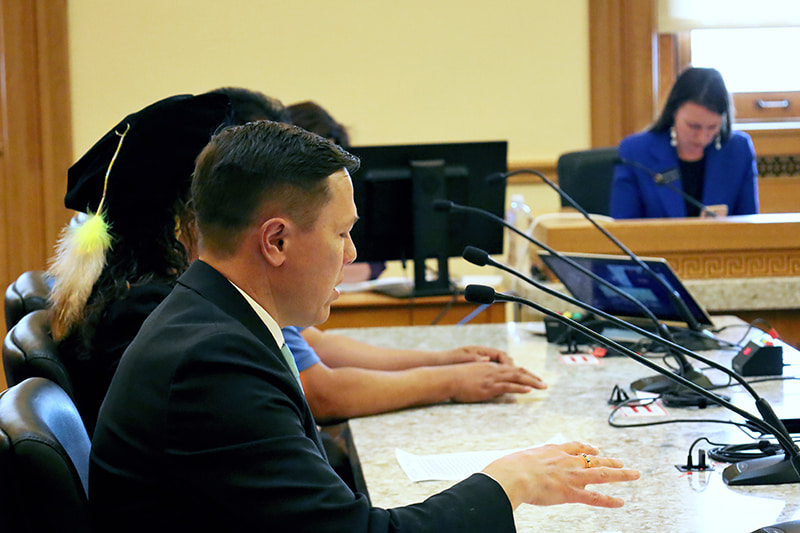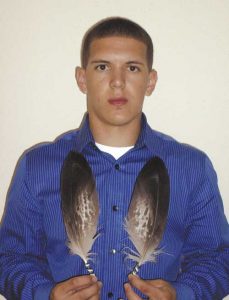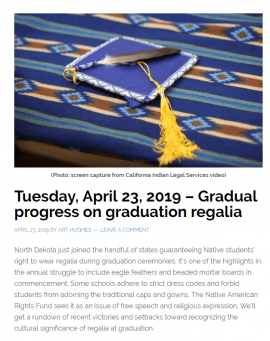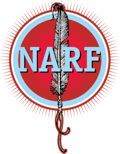
Students, parents, and advocates can find guidance and resources at our page, Wearing Eagle Feathers at Graduation.
NARF has a long history of assisting students who are prohibited from wearing eagle feathers at graduation ceremonies due to narrow graduation dress codes. We continue to advocate for these graduates so they can celebrate their great successes without sacrificing their tribal identity.
Background:

Many of the 574 federally-recognized tribes recognize leadership achievements by bestowing the person who earned the honor an eagle feather or plume. While tribal religions and spiritual practices vary from each other, in general, a Native person who wears a plume or eagle feather at a public event has done something amazing to show that they have the maturity to pray and care for themselves and others.
Many Native communities consider eagles to be spiritually significant. They believe that eagles carry the peoples’ prayers, and as eagles roam the sky, they have a special connection with the Creator. Their feathers represent honesty, truth, majesty, strength, courage, wisdom, power, and freedom. The United States government has long recognized the importance of eagles for Native religious and spiritual beliefs. In these communities, eagle feathers are given to individuals to mark and honor significant life accomplishments, such as graduation.
Similar to other religious objects, such as a cross or a rosary, Native people have used the eagle feather or plumes to pray. Many tribal religions regard the eagle as the bird that carries human prayers to the creator. Only a person with the maturity to handle a feather or plume with reverence may use one. Praying with eagle feathers and plumes, and bestowing them as a leadership honor are religious practices that Native peoples have observed for thousands of years.
Every spring, Native American students from across the country contact NARF because they are being prohibited from wearing eagle feathers at graduation ceremonies. Once schools come to understand the religious, cultural, and academic significance of eagle feathers, most make accommodations and exceptions for Native American students.

Unfortunately, each year some school districts persist in restricting Native American religious liberty and viewpoints. This singling out of Native students puts them in the position of having to choose between participating in the celebration of a great accomplishment with their classmates or following their Native religious and cultural traditions.
Examples of Related Court Cases:
- Lena’ Black v. Broken Arrow School District
- Goodall v. Midway Independent School District
- Titman v. Clovis Unified School District
- Waln v. Dysart School District
Resources for Students and Families:
Students, parents, and advocates can find guidance and resources at our page,
Wearing Eagle Feathers at Graduation.


